For more information about our industry-leading irrigation business software, Pro Contractor Studio™, and how it can transform your irrigation design and management processes, please reach out to us today
Don't wanna be here? Send us removal request.
Text

Software Republic offers landscape design software and irrigation design software for contractors, consultants, architects, and other green industry professionals. With tens of thousands of users throughout the world, our software has been the choice of design professionals since 1989.The mission of Software Republic is to provide the highest quality of technology and service to our customers.
0 notes
Text
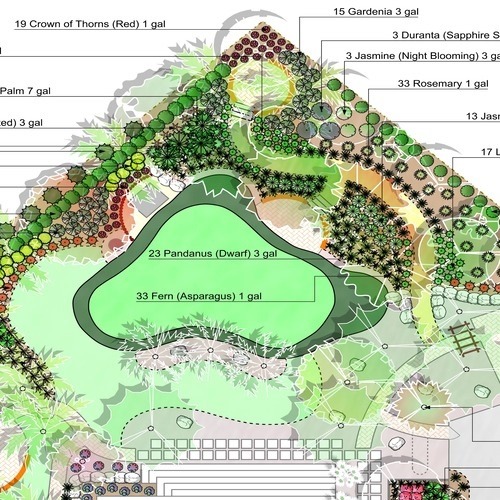
Software Republic offers landscape design software and irrigation design software for contractors, consultants, architects, and other green industry professionals. With tens of thousands of users throughout the world, our software has been the choice of design professionals since 1989.The mission of Software Republic is to provide the highest quality of technology and service to our customers.
0 notes
Text
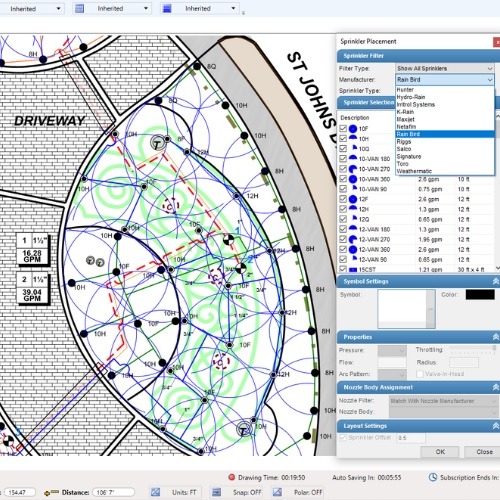
0 notes
Text
The Importance of Efficient Irrigation Design
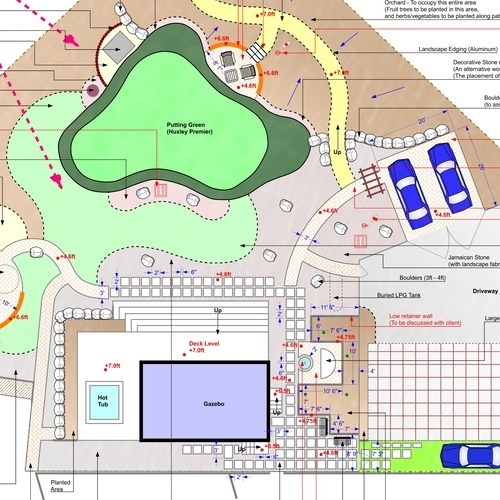
Efficient irrigation design is not just about watering your plants; it's about doing so in a way that minimizes waste and maximizes the effectiveness of each drop. Inefficient irrigation practices can lead to overwatering, which not only wastes water but also causes plant diseases and can damage the root systems. On the other hand, underwatering can result in stunted growth and a lack of vitality in your plants. For more information visit our website softwarerepublic
To achieve efficient irrigation design, it is crucial to understand the water requirements of your landscape and the factors that impact water efficiency. By doing so, you can create a system that delivers just the right amount of water to your plants, optimizing their growth while conserving this valuable resource.
Understanding Water Efficiency and Conservation
Water efficiency refers to the ability to achieve desired outcomes with the least amount of water possible. It involves making informed decisions about irrigation design, selecting appropriate equipment, and implementing efficient watering schedules. By improving water efficiency, you can reduce water waste, lower your water bills, and contribute to sustainable water management.
Water conservation, on the other hand, involves actively working to preserve and protect water resources. It goes beyond efficiency and focuses on reducing overall water consumption. While efficient irrigation design plays a significant role in water conservation, other practices such as rainwater harvesting and using drought-tolerant plants can further contribute to preserving this precious resource.
Factors to Consider in Irrigation Design
Before designing your irrigation system, it is essential to consider various factors that can influence its effectiveness. These factors include the type of soil in your landscape, the climate of your region, the slope of your land, and the types of plants you are watering.
Soil type plays a crucial role in determining how water moves through the ground and how much water your plants can absorb. Sandy soils, for example, drain quickly, while clay soils tend to hold water for longer periods. Understanding your soil type will help you determine the appropriate irrigation techniques and watering schedules.
The climate in your region also affects irrigation design. Areas with high temperatures and low humidity, for instance, may require more frequent watering than regions with cooler climates. Additionally, considering the rainfall patterns in your area can help you determine the supplemental irrigation needed.
The slope of your land is another critical factor to consider. Steep slopes can cause water runoff, leading to uneven watering and potential erosion. By designing your irrigation system to accommodate the slope, you can ensure that water reaches all areas of your landscape evenly.
Lastly, understanding the water requirements of the plants in your landscape is crucial. Different plants have varying needs when it comes to water, and designing your irrigation system to meet these requirements will ensure optimal plant health.
Types of Irrigation Systems
When it comes to irrigation systems, there are several options to choose from, each with its advantages and disadvantages. The most common types include sprinkler systems, drip irrigation, and soaker hoses.
Sprinkler systems are popular for their versatility and ability to cover large areas. They work by spraying water over the landscape, simulating rainfall. This type of system is ideal for lawns, gardens, and athletic fields. However, it is important to select the right type of sprinklers and nozzles to minimize overspray and ensure even water distribution.
Drip irrigation, on the other hand, delivers water directly to the roots of plants, minimizing evaporation and runoff. This method is highly efficient and suitable for areas with limited water availability. Drip irrigation is commonly used in vegetable gardens, flower beds, and landscaping projects.
Soaker hoses are another option for efficient irrigation. These hoses have tiny pores that allow water to seep out slowly, directly into the soil. Soaker hoses are ideal for watering specific areas, such as flower beds and shrubs. They are cost-effective and easy to install, making them a popular choice among homeowners.
Designing for Specific Landscapes - Lawns, Gardens, and Agricultural Fields
Different landscapes have unique irrigation requirements, and designing a system tailored to the specific needs of your landscape is essential for optimal results.
When it comes to lawns, efficient irrigation design involves considering factors such as soil type, grass variety, and climate. It is important to choose the appropriate sprinklers and nozzles to ensure even coverage and avoid overspray onto sidewalks or driveways. Additionally, understanding the water requirements of your grass will help you determine the right watering schedule to maintain a healthy and vibrant lawn.
In gardens, designing an efficient irrigation system involves considering the specific needs of each plant. Drip irrigation is often the preferred method for gardens as it allows for precise watering and minimizes water waste. By grouping plants with similar water requirements together and using adjustable emitters, you can ensure that each plant receives the appropriate amount of water.
For agricultural fields, irrigation design must take into account factors such as crop type, soil conditions, and field size. Large-scale irrigation systems, such as center pivots and drip systems, are commonly used in agriculture to deliver water efficiently and uniformly. Implementing sensors and automation technology can further optimize irrigation in agricultural settings.
Calculating Water Requirements and Scheduling Irrigation
Calculating the water requirements for your landscape is an essential step in designing an efficient irrigation system. By determining the amount of water your plants need, you can avoid over or underwatering, saving water and promoting healthy growth.
To calculate water requirements, you need to consider factors such as plant type, evapotranspiration rates, and soil moisture levels. Plant type plays a significant role in determining water needs as different plants have varying water requirements. Evapotranspiration refers to the combined loss of water through evaporation from the soil and transpiration from the plants. By understanding evapotranspiration rates in your region, you can estimate the amount of water your plants need.
Soil moisture levels are crucial for determining irrigation frequency. Measuring soil moisture can be done using moisture sensors or by conducting simple tests such as the finger test. Monitoring soil moisture levels will help you schedule irrigation based on the actual needs of your plants, rather than relying on a fixed schedule.
Once you have calculated the water requirements, it's time to schedule irrigation. It is generally recommended to water early in the morning when temperatures are cooler, and evaporation rates are lower. This allows plants to absorb water before the heat of the day. Avoid watering in the evening as it can promote the growth of fungal diseases.
Choosing the Right Irrigation Components - Controllers, Valves, and Sprinklers
Choosing the right irrigation components is crucial for the effectiveness and efficiency of your system. There are several key components to consider, including controllers, valves, and sprinklers.
Controllers, also known as timers, are the brains of your irrigation system. They allow you to automate the watering process and set specific schedules. When choosing a controller, look for features such as weather-based programming, which adjusts watering based on local weather conditions, and water-saving options like cycle and soak, which allows water to penetrate the soil before applying more.
Valves control the flow of water through your irrigation system. It is essential to select high-quality valves that are durable and resistant to leaks. Consider features such as flow control, which allows you to adjust water pressure, and pressure regulation, which maintains consistent water flow.
Sprinklers are the final component of your irrigation system, and choosing the right ones is crucial for even water distribution and minimizing overspray. There are various types of sprinklers available, including rotor sprinklers, spray sprinklers, and impact sprinklers. Consider factors such as coverage area, precipitation rate, and adjustability when selecting sprinklers for your landscape.
Incorporating Smart Irrigation Technology
In recent years, smart irrigation technology has revolutionized the way we approach irrigation design. These intelligent systems use weather data, soil moisture sensors, and advanced algorithms to deliver water precisely when and where it is needed.
Smart controllers, for example, adjust watering schedules based on real-time weather conditions, preventing unnecessary irrigation during rainy periods. Soil moisture sensors provide feedback on the moisture levels in the soil, allowing for more accurate irrigation scheduling. Additionally, advanced algorithms consider multiple factors, such as plant type, soil type, and slope, to determine the optimal watering schedule.
By incorporating smart irrigation technology into your design, you can further enhance water efficiency and reduce water waste. These systems also provide real-time data and remote control capabilities, allowing you to monitor and adjust your irrigation system from anywhere, saving time and ensuring optimal plant health.
Maintaining and Optimizing Your Irrigation System
Once your irrigation system is installed, it is essential to maintain and optimize its performance for long-term efficiency. Regular maintenance helps prevent leaks, clogs, and other issues that can lead to water waste and inefficient irrigation.
Start by checking for leaks in your system. Inspect all valves, connections, and sprinklers for any signs of leakage. Repair or replace any damaged components to ensure proper water distribution.
Cleaning sprinkler heads and nozzles is another important maintenance task. Over time, debris can accumulate and block the flow of water, leading to uneven watering. Regularly inspect and clean your sprinkler heads to maintain optimal performance.
Adjusting sprinkler heads is crucial for proper water distribution. Ensure that each sprinkler head is aligned correctly and adjusted to the appropriate height. This will help prevent overspray and ensure that water reaches the intended areas.
Regularly monitor and adjust your watering schedule based on the changing needs of your landscape. As plants grow and weather conditions change, it is essential to adapt your irrigation schedule accordingly. By staying proactive and making necessary adjustments, you can optimize water efficiency and plant health.
Achieving Efficient Irrigation Design for Sustainable Water Management
Efficient irrigation design is essential for maximizing plant health, conserving water, and contributing to sustainable water management. By considering factors such as soil type, climate, and plant water requirements, you can create an irrigation system that delivers the right amount of water at the right time.
Choosing the appropriate irrigation components, incorporating smart irrigation technology, and regularly maintaining your system will further enhance water efficiency and reduce water waste. By implementing these strategies and techniques, you can transform your landscape into a flourishing oasis of green while promoting sustainable water management.
Remember, efficient irrigation design is a continuous process. Regularly assess and adjust your system based on the changing needs of your landscape and the latest advancements in irrigation technology. By doing so, you can ensure long-term performance and make a positive impact on water conservation efforts. So, get started on designing your efficient irrigation system and enjoy the benefits of a healthy and thriving landscape while saving water.
0 notes
Text
Software Republic A: Software A is a comprehensive desktop solution suitable for professional landscapers and large-scale projects. It offers advanced design capabilities, including intricate zone management, customizable reports, and in-depth analysis tools. While it may have a steeper learning curve, Software A provides unparalleled flexibility and customization options for complex irrigation designs.
0 notes
Text
The Right Design Software for Your Sprinkler System Business
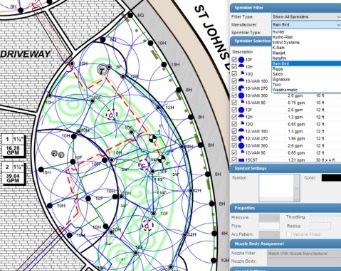
With numerous design software options available in the market, choosing the right one for your sprinkler system business can be a daunting task. To make an informed decision, consider the specific needs and requirements of your business.
Firstly, evaluate the features and functionalities of the software. Does it offer the tools and calculations necessary for your design process? Does it provide customization options to accommodate the unique characteristics of your landscape?
Secondly, consider the user interface and ease of use. The software should have an intuitive interface that allows for easy navigation and quick adoption. Look for software that offers a user-friendly experience, with clear instructions and support resources.
Additionally, consider the compatibility and integration capabilities of the software. Does it integrate with other tools and technologies that you currently use or plan to implement in the future? Seamless integration can enhance the overall efficiency and effectiveness of your sprinkler system design process.
Lastly, consider the level of customer support and training resources offered by the software provider. Look for providers that offer comprehensive support, including online tutorials, user forums, and responsive customer service. This ensures that you have access to the assistance you need to maximize the benefits of the software.
Importance of Irrigation Design Software
Proper irrigation design is essential for maintaining healthy and beautiful gardens. With the right software, you can accurately plan and schedule irrigation, ensuring that your plants receive the right amount of water at the right times. This not only promotes optimal plant growth but also conserves water, saving you time and money in the long run.
Irrigation design Software Republic provides numerous benefits over traditional manual watering methods. It allows you to create precise irrigation plans based on factors such as plant type, soil conditions, and climate. By automating the watering process, you can eliminate human error and ensure consistent watering throughout your garden. Additionally, some software options offer advanced features like weather-based irrigation scheduling, which adjusts watering based on real-time weather data to further optimize water usage.
Investing in irrigation design software is a wise choice for both professional landscapers and homeowners who want to achieve perfectly watered gardens with minimal effort. But before you make a decision, there are several important factors to consider.
0 notes
Text
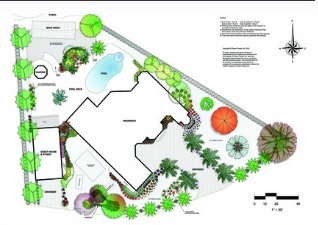
Software Training The trainers listed below are not employees of Software Republic. Software Republic is not responsible for the scheduling, content or cost of
0 notes
Text
We have temporarily discontinued selling RainCAD as we determine its place in the market. Since we released Pro Contractor Studio in 2008, its ease of use, low learning curve and low price made it our number one selling software by far.
0 notes
Text
Software Republic offers landscape design software and irrigation design software for contractors, consultants, architects, and other green industry professionals.
1 note
·
View note